Discover 11 hidden attractions, cool sights, and unusual things to do in Youngstown (United States). Don't miss out on these must-see attractions: Covelli Centre, Fellows Riverside Gardens, and Butler Institute of American Art. Also, be sure to include Stambaugh Auditorium in your itinerary.
Below, you can find the list of the most amazing places you should visit in Youngstown (Ohio).
Table of Contents
Covelli Centre
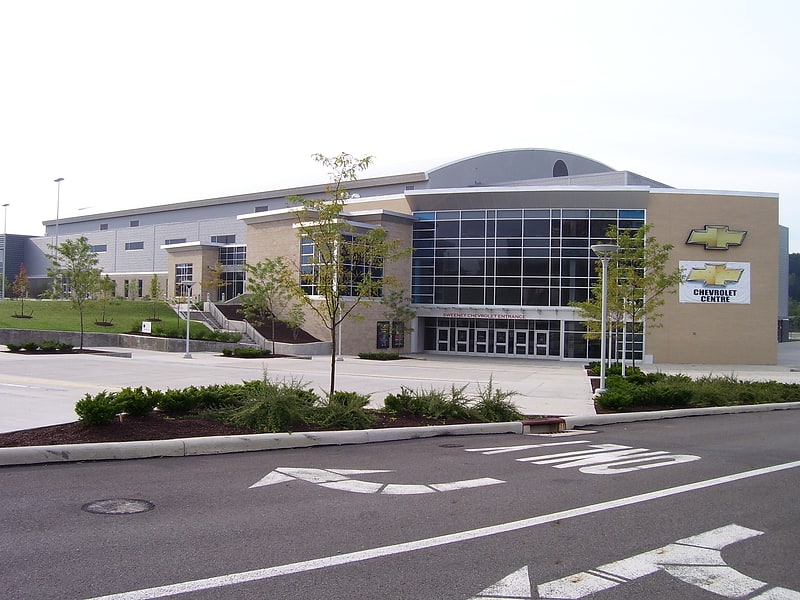
Arena in Youngstown, Ohio. The Covelli Centre is a multi-purpose arena in Youngstown, Ohio, United States. It opened in 2005, thanks in a large part to a $26 million HUD redevelopment grant secured in 2000 by Congressman James A. Traficant Jr. It is home to the Youngstown Phantoms of the United States Hockey League. The Covelli Centre was previously known as the Chevrolet Centre and is nicknamed "The Chevy Centre" or "The Convo" by some in the area from its former names.[1]
Address: 229 E Front St, 44503 Youngstown
Fellows Riverside Gardens

Botanical garden in Youngstown, Ohio. Fellows Riverside Gardens are public botanical gardens included in the Mill Creek Metro Parks system. The gardens are located at 123 McKinley Avenue, in Youngstown, Ohio, United States. They are open daily with no admission fee.[2]
Address: 123 McKinley Avenue, 44509-2859 Youngstown
Butler Institute of American Art
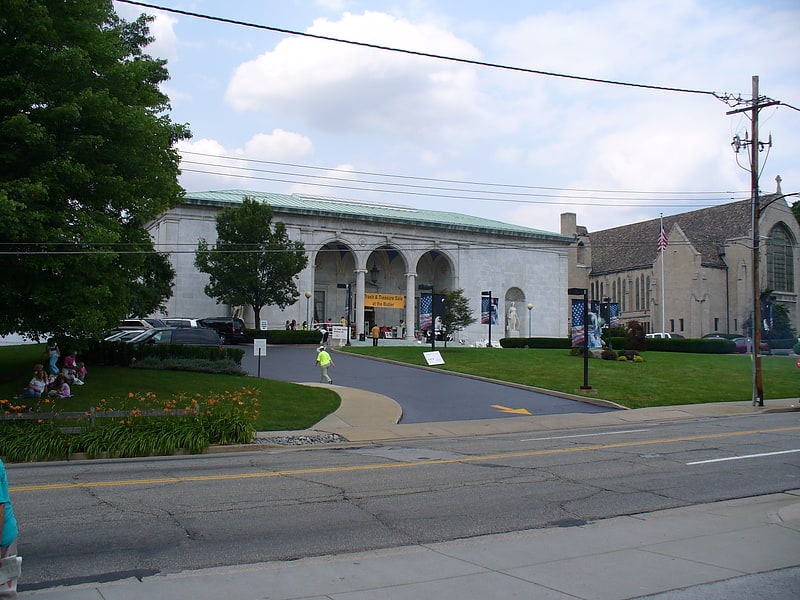
Art institute in Youngstown, Ohio. The Butler Institute of American Art, located on Wick Avenue in Youngstown, Ohio, United States, was the first museum dedicated exclusively to American art. Established by local industrialist and philanthropist Joseph G. Butler, Jr. the museum has been operating pro bono since 1919. Dedicated in 1919, the original structure is a McKim, Mead and White work listed on the National Register of Historic Places.
Among the most celebrated works in the Butler's permanent collection is Winslow Homer's Snap the Whip, a famed tribute to the era of the one-room schoolhouse. Winslow, however, painted two versions of Snap the Whip, with the other version residing in the Metropolitan Museum of Art. The two paintings differ, with the Butler's version of Snap the Whip having mountains in the background, while the Metropolitan's does not. In 2007, the museum acquired the Norman Rockwell painting Lincoln the Railsplitter for $1.6 million. The previous owner of the 84.5 by 44.5 inch painting was businessman and former presidential candidate Ross Perot. Other aspects of the nation's past are captured in a unique collection of paintings featuring southwestern Native Americans, which were once part of Joseph Butler's personal collection.
Additional highlights include an iconic depiction of George Washington's wedding, William Gropper's celebrated Youngstown Strike, an interpretation of the area's violent 1937 Little Steel Strike, and Albert Bierstadt's The Oregon Trail, 1869.
Meanwhile, the gallery of modern art features a striking, life-sized painting by Alfred Leslie titled, Americans: Youngstown, Ohio, which depicts personalities connected with the Butler as they appeared in the 1970s. The museum also holds a significant collection of works by the Abstract Expressionist painter Robert Motherwell.
In recent years, the Butler has expanded significantly. A 19,000-square-foot (1,800 m2) south wing, the Beecher Center, was constructed in conjunction with Youngstown State University in 2000 with a focus of uniting technology and art. Two years later, the 3,400-square-foot (320 m2) Andrews Pavilion, featuring a sculpture atrium, gift shop, and café, was added to the rear of the facility. In 2006, the Butler purchased the neighboring First Christian Church facility and converted it into an education and performing arts center. In October 2007, the museum had its first auction in fifteen years. Pieces of art were donated from around the country and up to 125 art enthusiasts and museum supporters gathered to view and buy the pieces of art. All of the money raised from the auction went to the hiring of scholars to produce an updated catalog of all the pieces of art in the museum and its cost of publication.[3]
Address: 524 Wick Ave, 44502 Youngstown
Stambaugh Auditorium
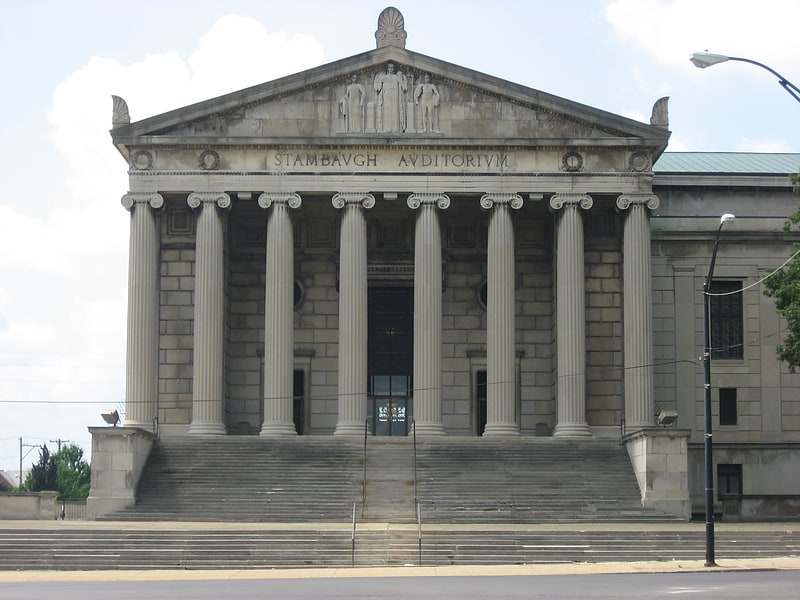
Auditorium in Youngstown, Ohio. Stambaugh Auditorium is located in Youngstown, Ohio in the United States. It was listed on the National Register of Historic Places in 1984.
Stambaugh Auditorium opened in 1926 through the generosity of Henry H. Stambaugh, one of the city's leading businessmen in the early 20th century. Mr. Stambaugh decreed in his Will that there was to be a venue built for the entertainment, enjoyment and education of Youngstown and surrounding communities. The centerpiece of the complex is the Concert Hall, which can accommodate a crowd of 2,553. The venue also features the Jeanne D. Tyler Grand Ballroom, the Anne K. Christman Memorial Hall, and a Formal Garden at the southern end of the building, all of which can be rented for private functions.
Beyond performances, Stambaugh Auditorium is home to multiple spaces which host a variety of events. Business events and seminars have become increasingly popular in recent times, in addition to a variety of non-profit fundraising events. Rehearsals and weddings at Stambaugh remain a staple at the facility, accommodating many eager brides using the building's beautiful architecture as a backdrop for their formal photos. Local high schools and some colleges use the auditorium each year to make their graduations memorable, and dance competitions from across the country take advantage of Stambaugh's facilities.
The Concert Hall houses the recently restored E.M. Skinner Pipe Organ, offering local and national organists an opportunity to play on a spectacular, historically accurate instrument. Many Stambaugh events are offered at reasonable ticket rates and, at times, no cost at all, as to reflect the mission statement outlined by Henry H. Stambaugh's will 89 years ago. All of these spaces generate the necessary revenue to keep Stambaugh functioning on a daily basis.[4]
Address: 1000 5th Ave, 44504-1603 Youngstown
St. Columba Cathedral
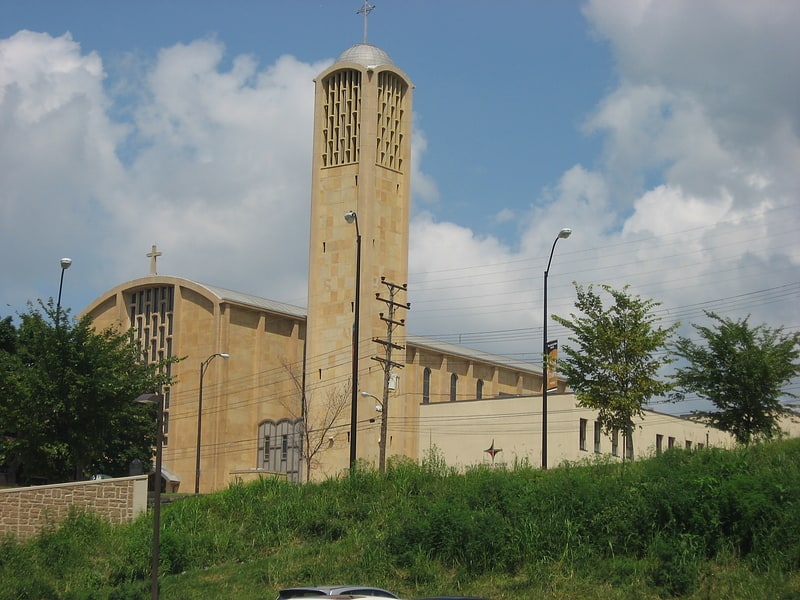
Cathedral in Youngstown, Ohio. St. Columba Cathedral is a parish and the cathedral church of the Roman Catholic Diocese of Youngstown, in Youngstown, Ohio, United States.[5]
Address: 159 W Rayen Ave, 44503-1088 Youngstown
Youngstown Historical Center of Industry and Labor

Museum in Youngstown, Ohio. The Youngstown Historical Center of Industry and Labor, located in Youngstown, Ohio, preserves the history of the steel industry that dominated the Youngstown area's economic life for much of the 20th century. The museum is owned by the Ohio History Connection and operated by Youngstown State University. The facility, which was designed by noted architect Michael Graves, is reminiscent of a steel mill, complete with stylized smoke stacks.[6]
Address: 151 W Wood St, 44503 Youngstown
Powers Auditorium
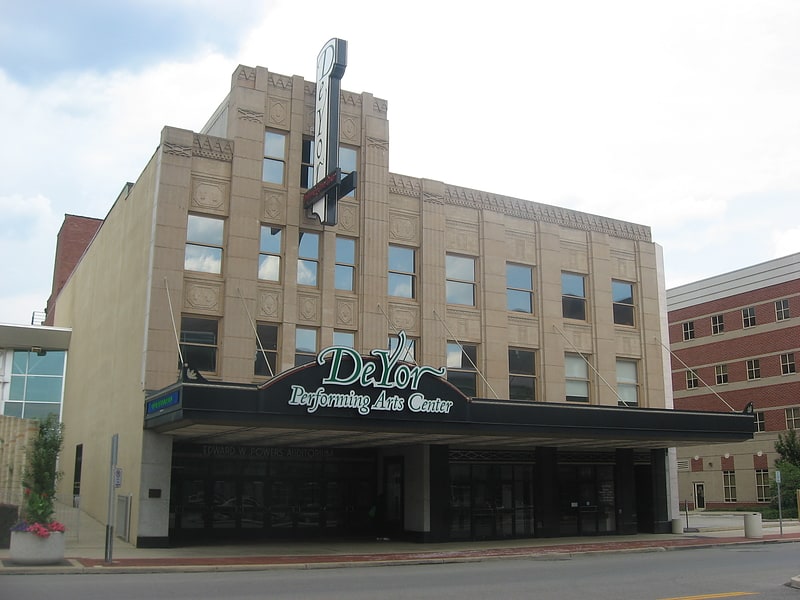
Auditorium in Youngstown, Ohio. Powers Auditorium, in Youngstown, Ohio is one of the largest auditoriums in the Youngstown-Warren area. The facility is the main venue of downtown Youngstown's DeYor Performing Arts Center. The complex also includes the Adler Art Academy, Beecher Flad Pavilion, and Ford Family Recital Hall. Originally built in 1931 as the Warner Theatre, the former movie palace was renovated and reopened as Powers Auditorium in 1969.
The main tenant of Powers Auditorium is the Youngstown Symphony, which performs from October through May. The facility also hosts other musical acts, touring Broadway productions, and locally produced theater (primarily from Ballet Western Reserve and Easy Street Productions, two Youngstown-based theater companies).[7]
Helen Chapel
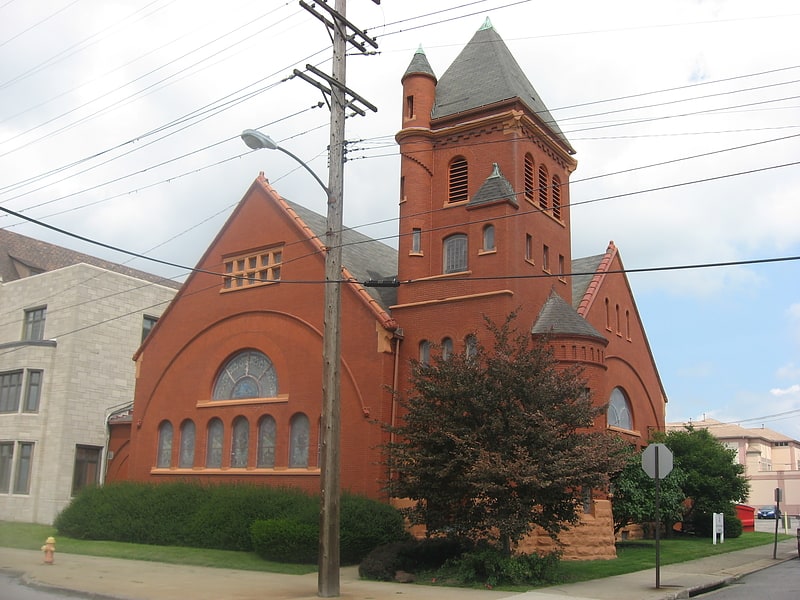
Chapel in Youngstown, Ohio. Helen Chapel is a historic chapel at the northwest corner of E. Wood and Champion Streets in Youngstown, Ohio. It was built in 1889 and added to the National Register in 1986.[8]
Basilica of Our Lady of Mount Carmel

Basilica in Youngstown, Ohio. The Basilica of Our Lady of Mount Carmel is a historic Catholic Church off OH 289 in Youngstown, Ohio, United States. It was built in 1913 and added to the National Register of Historic Places in 1979 as Our Lady of Mount Carmel Church. The parish of the Diocese of Youngstown was established in 1906 by the Missionaries of the Precious Blood and local Italian Immigrates. In 2011 the parish was merged with St. Anthony of Padua parish. The Holy See elevated the church to a Minor Basilica in 2014.
Each year, an Italian festival is held at the end of July, in the church's parking lot.[9]
Address: 343 Via Mt Carmel Ave, 44505-3096 Youngstown
Welsh Congregational Church
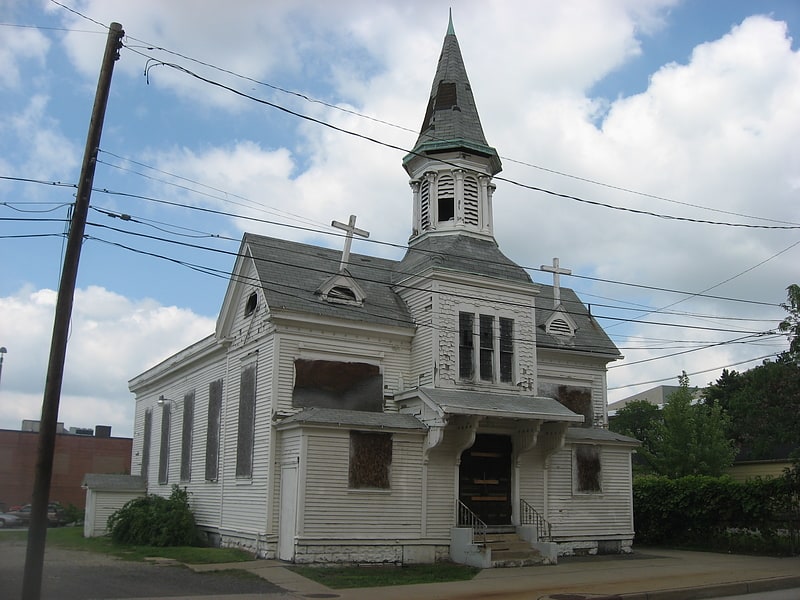
Historical landmark in Youngstown, Ohio. The Welsh Congregational Church is a historic church in Youngstown, Ohio, United States. Formed by some of Youngstown's large Welsh American community, it was once the center of Welsh life in Youngstown, and it has been designated a historic site.
During the middle and late nineteenth century, Youngstown began to develop as an industrial powerhouse, and its population expanded with the arrival of thousands of western European immigrants. The largest ethnic group was Welsh, many of whom came to work in coal mines at Brier Hill, west of the city. Some of the Welshmen founded a Congregational church at Brier Hill in 1845, but significant growth prompted the members to construct a new building in Youngstown itself, near downtown, in 1861. This building, the present structure, soon became an ethnic community center as well as a house of worship. Major reconstruction was performed on the building in 1887, completely changing its architectural style. Few other alterations were made over the next century, and by the 1980s, it was Youngstown's oldest church and the only frame house of worship without recent modifications.
One and a half stories tall, the church is composed of weatherboarded and shingled walls and an asbestos roof, set upon a stone foundation. It was originally a Greek Revival structure, although the Queen Anne style has dominated since 1887. The floor plan is vaguely cruciform, with the arms placed so near the street that they appear to form the facade, and the top of the cross protrudes only a slight distance from the arms. All sections are gable-roofed. Small dormer windows are placed in the arm roofs, and a polygonal tower with a steep roof sits atop the facade.
In 1986, the Welsh Congregational Church was listed on the National Register of Historic Places, qualifying both because of its historically significant architecture and because of its place in community history. It was part of a multiple property submission of downtown-area buildings, along with numerous commercial buildings, the Masonic Temple, and First Presbyterian Church. By this time, it was no longer occupied by its original owners, having become home instead to the Messiah Holiness Church.[10]
Union Baptist Church
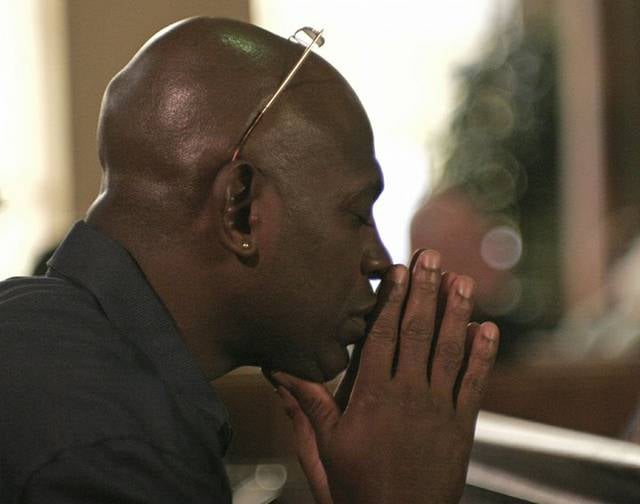
Building in Cincinnati, Ohio. The Union Baptist Church is Cincinnati's oldest black church. The church was founded on July 14, 1831. They had their first meeting in a building on Third Street, between Elm and Plum Streets, downtown. The members built a church on Central Avenue and called Rev. David Leroy Nickens of Chillicothe, Ohio as its first pastor. By the end of its first decade, the church had grown sufficiently to require a new building and by 1839, moved to a new location on Baker Street, where they remained for twenty-five years. Nickens was succeeded by Rev. Charles Satchell in 1838, who in turn was succeeded by William P. Newman in 1848. When Newman fled to Canada because of the passage of the Fugitive Slave Act of 1850, he was succeeded by Rev. Henry Adams, who served until 1855; Rev. H. L. Simpson, who served until 1858; and Rev. H. H. White who served three years. William Newman returned in 1864, serving until his death in the 1866 cholera epidemic. Simpson returned to fill the vacancy, serving until 1869, when he was succeeded by Rev. James H. Magee.
In 1864, Church members founded the Union Baptist Cemetery, in the Price Hill neighborhood. It is the oldest Baptist African-American cemetery in Cincinnati.
In the 1960s, urban renewal forced the church to move from its longtime home at Richmond and Mound Streets. The Church moved to Seventh & Central Avenues in 1971, under the leadership of Rev. Wilber Page, longtime pastor. The church continues its work in the Cincinnati community.[11]
Address: 405 W 7th St, 45203-1504 Cincinnati